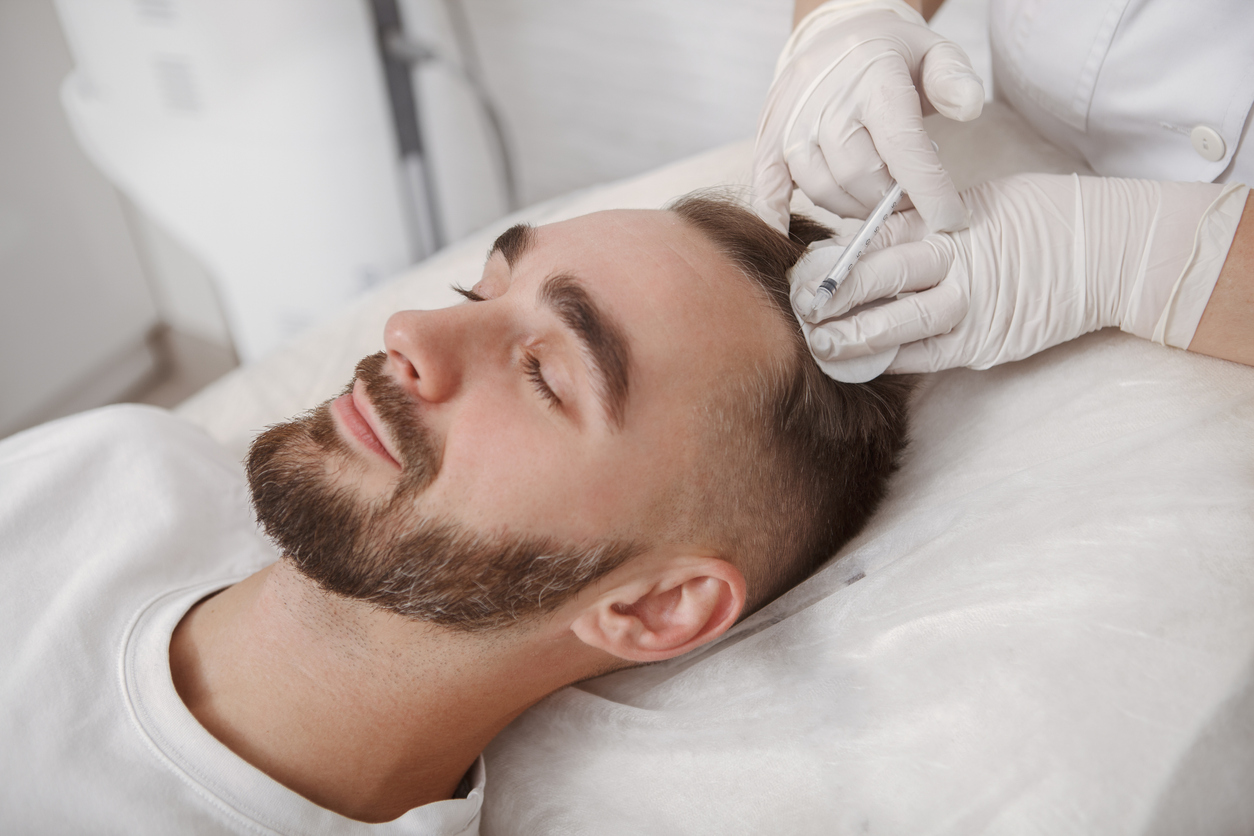Placing follicular units into recipient sites is the critical final stage of hair transplantation. Dr. Ratushny and his hair transplant surgical technicians take great care to ensure that this part of the procedure is well-planned and well-executed. To help him with this, Dr. Ratushny and his team use the latest technology called implanters. In a past blog post, Dr. Ratushny detailed his use and expertise with sharp implanters, and in this blog post he describes the expertise MassDerm Hair Transplant Institute developed with using KEEP implanters, also known as “dull implanters.”
Prior to the invent of implanters, forceps were used by hair transplant technicians to place follicular units into the recipient sites of the scalp created by the hair transplant surgeon. This technique is still used by many clinics and certainly requires a significant amount of expertise (and can produce great results). One of the downsides of using only sharp forceps by hair techs for follicular unit placement is that sometimes grasping the follicular units with forceps may result in crush trauma to either the bulb or the bulge area of the hair follicles (where the stem cells reside). This can result in decrease of growth capacity and rarely failure of growth of individual traumatized hair follicles. Additionally, placing with sharp forceps may result in additional trauma to the scalp and result in extra bleeding.
Dr. Ratushny and his team started using KEEP implanters (a type of dull-tipped implanter) because their use overcomes the shortcomings of using just sharp forceps for hair placement. Similar to sharp implanters, KEEP implanters minimize trauma to the follicular units and the scalp. The main difference is that dull-tipped implanters are employed by Dr. Ratushny’s hair transplant surgical assistants and the hair follicles are placed into recipient sites that Dr. Ratushny creates himself. The tips of the KEEP implanters are dull so that there is minimal trauma to the recipient sites on the scalp as Dr. Ratushny’s surgical assistants gently place the follicles. Additionally, KEEP implanters can be rolled to load them with hair follicles, thus decreasing trauma to the follicles during handling prior to placement into the scalp.
In cases where KEEP (“dull”) implanters are used, Dr. Ratushny personally creates every single recipient site in the recipient area of the scalp, paying close attention to the direction, depth, size of recipient site, and angle of hair placement. Then, Dr. Ratushny’s hair transplant surgical assistants use KEEP implanters to gently place the follicular units within the recipient sites that Dr. Ratushny creates. This technique allows Dr. Ratushny to retain the artistry in design of direction, curl, position, and angle of the hair follicles and allows his surgical assistants to place the follicles in a way that preserves their viability by minimizing unnecessary manipulation.


